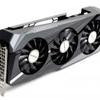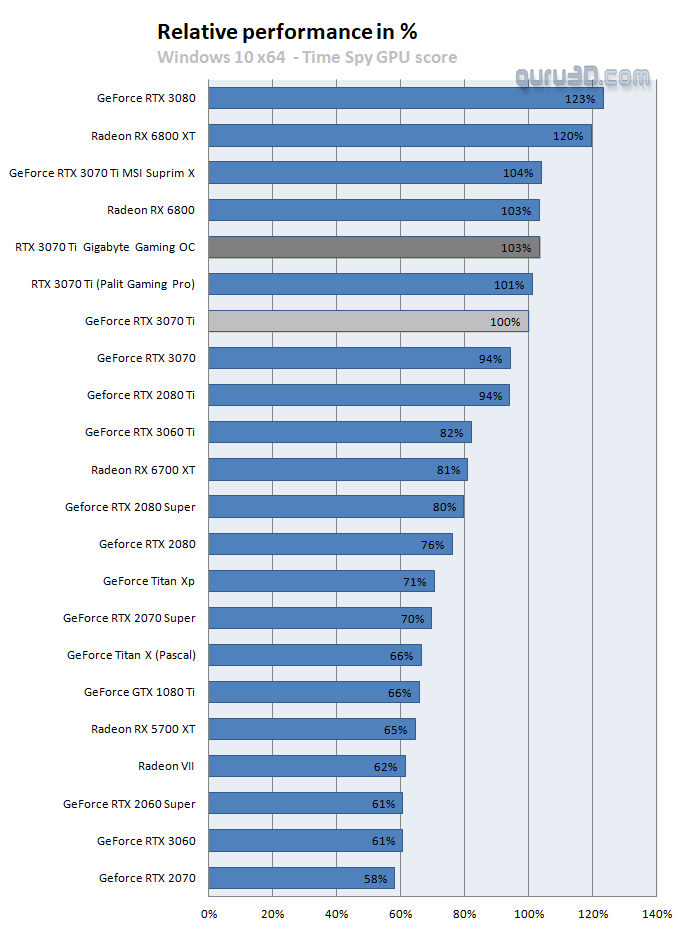Final words and conclusion
Final words
I've stated this in all previous 3070 Ti reviews, the 3070 Ti overall is a little lackluster seen from the RTX 3070 in regards to performance and overall high pricing. Don't get me wrong, this is a nice performing card. However, with the increase in pricing, we're likely going to have a hard time justifying the additional price premium it carries along with it. I mentioned this last week in the 3080 Ti reviews, and I'll say it again in the 3070 Ti reviews; it is a bizarre time to write reviews on graphics cards with the shortages and insane price hikes. Really what the market needs are affordable, high-performing graphics cards that sit well under the 500 USD marker. The RTX 3070 Ti does not entirely fall into that category but perhaps is among my personal favorite cards (if you can find one at MSRP). The good news is that this card series and newer NVIDIA SKUs are all hash-rate limited, preventing cryptocurrency miners to dominate sales. The reality however is also that NVIDIA can only fabricate only a certain number of GPUs, and they'll still need to make the call on how much allocation ends up at gamers, and how much is intended for other markets. We hope NVIDIA will make wise decisions priority-wise because if the trend continues then the PC gaming market is bound to die off as what software houses will invest in PC gaming if that market is on a sharp decline?
Performance
Realistically, the GeForce RTX 3070 Ti is better than I anticipated at first when the specs arrived, whilst the card sees only a negligible increase in shading cores, the main benefit is the memory type. GDDR6X over DDR6 is making a difference as the card is a bit bandwidth (fillrate) limited for the GPU to do its thing with. The actual volume size of the VRAM partition however is very questionable for a 599 USD card. Up to 2560x1440 you'll be fine even with raytracing and DLSS activated, at Ultra HD however you will be bound to run into limitations a bit faster. But in all fairness, this card is aimed at the 2560x1440 domain, so up to that resolution, you'll be really loving the performance that this card reproduces for you. This card can run games at WQHD quite easily even with raytracing and a DLSS combo; it will serve you well at that resolution. The closest product from the competition would be the Radeon RX 6800 and 6800 XT. NVIDIA however offers faster raytracing performance and offers you the option to put that into 6th gear with DLSS.
A custom card like the SUPRIM X does bring in additional factory tweaked performance, this will sit at roughly 3 to 4% for this model in its out of the box configuration.
Cooling & noise levels
Depending on the airflow level inside your chassis, expect the card to hit an excellent 65 Degrees C range temperature-wise under hefty load conditions. The card is audible though, ~42 Dba of noise, that's ... hearable and moderate. It is however airflow, not irritating TBH. The alternative silent mode BIOs lowers that value to a much better 38~39 DBa at the cost of only a fraction of performance. This mode would get our preference. The temps now we'll hover slightly above the 70 Degrees C marker though, which we are very comfortable with.
A dynamic that is hard to explain, we understand.
Energy
Heat output and energy consumption are always closely related t o each other as (graphics) processors and heat can be perceived as a 1:1 state; 100 Watts in (consumption) often equals 100 Watts of heat as output. This is the basis of TDP. NVIDIA is listing their TGP at 290 Watts, the amount of power the GPU and major components use. We measure the graphics card based on TBP, total board power as you'd easily forget that fans spinning and RGB also draw power. As such in peak load conditions we're hovering at a close to 300 Watt state for typical power draw with peaks. Ampere does peak/spike a little more every now and then in power consumption.
Coil whine
Much like the 3080 and 3090, the GeForce RTX 3070 Ti does exhibit coil squeal. Is it annoying? It's at a level you can hear it. In a closed chassis, that noise would fade away in the background. However, with an open chassis, you can hear coil whine/squeal. Graphics cards all make this in some form, especially at high framerates; this can be perceived.
Pricing
NVIDIA is pricing the reference GeForce RTX 3070 Ti at USD 599, and I'm afraid that's just too much for a graphic card that showed marginally better performance. Sometimes a few percent, be overall roughly 5 to10% seen from the year-old 3070. Add to that the current state of the market. Please do expect AIB cards to be more expensive, as that is a trend as of late. We expect Gaming OC to add another 100 USD to the price. We'll have to wait and see how that pans out, though, as everything is dependant on the actual volume availability of these cards. We can say so little about pricing these days.
Tweaking
Overall we can state that all cards, and really it doesn't matter which brand that will be, can get you an extra 5% performance once tweaked. This is calculated by NVIDIA, with small margins here and there based on ASIC and memory quality. For the RTX 3070 Ti series, we'd expect you to add and reach 500~1000 MHz on the memory subsystem (Gbps / effective bandwidth). One of the most important settings you can tweak is the power limiter, set it to the max, so your GPU gets more energy budget, then the GPU clock can be increased anywhere from +50 to +175 MHz. Why this huge differential, you might wonder? Well, results will vary per board, brand, and even card due to cooling (GDDR6X/GPU/VRM), but also ASIC quality. I will say this, though, and frequency matters LESS these days. Even if the GPU could do 2050~2100 MHz, your power limiter will be the decisive and dominant factor, lowering that clock frequency to meets its assigned power budget.
Conclusion
'Moody' is the worst to describe the price level we're dealing with, see we like the 3070 Ti as a whole, as a product, and for its performance. Gigabyte did a really nice job with the Gaming OC model. However, the conundrum is the price, dragging it all down. We're talking about a 2560x1440 resolution targeted graphics card, now costing likely 699 USD or more. When you blindly stare at the marginal increase of 256 Shader cores you might feel indifferent in the fact that the product would not make enough difference. NVIDIA did make the right call to move the GDDR6X though, the overall performance is there as the older 3070 memory was somewhat bandwidth limited. We're just not sure it makes a substantial enough differential. It turns out that the reconfigured product yields suitable numbers, especially in the WQHD resolution domain where this card is targeted at. 8GB however is going to become more troublesome in Ultra HD, albeit that's still a relativistic statement to make as this card is not aimed at that monitor resolution. As an overall package of hard- and software the GeForce RTX 3070 Ti performs well on all fronts, performance, cooling, and acoustics as a dual BIOS option. Gigabyte did most things right, even manually tweaking brings on great results. The big enigma will remain to be availability and pricing. Acoustics are debatable at default OC mode as we hit 41~42 DBa, the silent mode is extremely comfortable at hardly any performance loss. We recommend that BIOOS setting TBH. The cooling performance itself remains excellent even in silent mode. So a desktop gaming graphics card pur sang, this product is very satisfying and gratifying and definitely a recommended product. We're not granting awards as the pricing and availability will likely be totally off.
Sign up to receive a notification when we publish a new article.
Or go back to Guru3D's front page
- Hilbert, LOAD"*",8,1.


